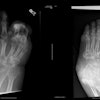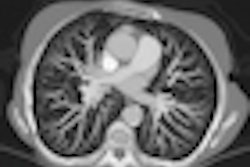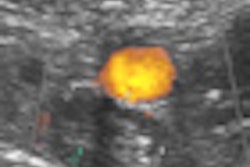
NEW YORK (Reuters Health), Feb 4 - The presence of deep venous thrombosis (DVT) in patients with pulmonary embolism is associated with an increased risk of death, according to a report in the January 28 online issue of the American Journal of Respiratory and Critical Care Medicine.
"Studies of patients with proven acute pulmonary embolism have reported a high prevalence (i.e., up to 61%) of concomitant DVT," lead author Dr. David Jimenez, from Ramon y Cajal Hospital, Madrid, Spain, and colleagues state. The prognostic significance of this finding, however, is unclear.
To investigate, the researchers assessed three-month all-cause and pulmonary embolism-specific mortality in 707 emergency department patients who were diagnosed with a first episode of acute symptomatic pulmonary embolism.
Bilateral lower extremity venous compression ultrasound uncovered DVTs in 362 (51.2%) patients. Seventy-seven patients (10.9%) died during follow-up.
The presence of DVT increased all-cause and pulmonary embolism-specific mortality by 2.05- and 4.25-fold, respectively. DVT was still an independent predictor of all-cause mortality when patients with vena caval filters or thrombolytic treatment were excluded.
In a validation cohort of 4,476 patients with acute PE enrolled in a venous thromboembolism registry, DVT was again a significant predictor of mortality (HR 1.66, p < 0.001 for all-cause mortality and HR 2.01, p = 0.01 for pulmonary embolism-specific mortality).
The researchers also found that patients who had a DVT when their pulmonary embolism was diagnosed were at higher risk for a symptomatic venous thromboembolism recurrence, compared to patients without a concomitant DVT (7.2% versus 1.7%, p < 0.001).
The current results have at least two clinical implications, the authors note.
"First, because patients with pulmonary embolism who have concomitant DVT have an increased risk of recurrent venous thromboembolism and pulmonary embolism-related death compared to those without concomitant DVT, they may potentially benefit from more intensive surveillance and treatment such as thrombolysis," they note.
"Second, because patients without concomitant DVT have a relatively low rate of venous thromboembolism recurrence and mortality, these patients may be more optimal candidates for partial or full outpatient pulmonary embolism therapy compared to those with concomitant DVT."
Am J Resp Crit Care Med 2010.
Last Updated: 2010-02-03 11:32:30 -0400 (Reuters Health)
Related Reading
JAMA: Single negative US scan can rule out DVT, February 2, 2010
Limits on off-hours DVT ultrasound may be more efficient, November 5, 2009
Two-point US exam keeps up with whole-leg US in detecting DVT, October 9, 2008
Lack of residual vein thrombosis indicates low risk for recurrent DVT, September 17, 2008
Rapid lysis technique removes DVT, prevents post-thrombotic syndrome, March 5, 2007
Copyright © 2010 Reuters Limited. All rights reserved. Republication or redistribution of Reuters content, including by framing or similar means, is expressly prohibited without the prior written consent of Reuters. Reuters shall not be liable for any errors or delays in the content, or for any actions taken in reliance thereon. Reuters and the Reuters sphere logo are registered trademarks and trademarks of the Reuters group of companies around the world.


















